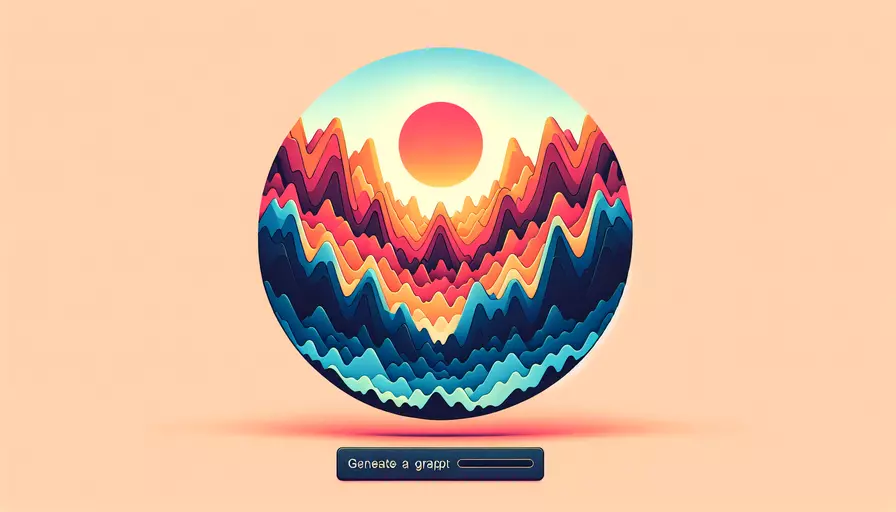
在Vue中导出材质贴图通常涉及到WebGL库(如Three.js)的使用。要导出材质贴图,您需要处理以下几个关键步骤:1、创建并配置Three.js场景;2、加载材质贴图;3、将材质贴图应用到对象上;4、导出材质贴图。以下是详细的步骤和解释。
一、创建并配置Three.js场景
在Vue项目中使用Three.js创建和配置场景是第一步。首先,确保您已经安装了Three.js库。您可以使用以下命令安装Three.js:
npm install three
然后,在您的Vue组件中导入Three.js并创建场景、相机和渲染器:
import * as THREE from 'three';
export default {
data() {
return {
scene: null,
camera: null,
renderer: null
};
},
mounted() {
this.initThreeJS();
},
methods: {
initThreeJS() {
this.scene = new THREE.Scene();
this.camera = new THREE.PerspectiveCamera(75, window.innerWidth / window.innerHeight, 0.1, 1000);
this.renderer = new THREE.WebGLRenderer();
this.renderer.setSize(window.innerWidth, window.innerHeight);
this.$refs.rendererContainer.appendChild(this.renderer.domElement);
this.camera.position.z = 5;
this.animate();
},
animate() {
requestAnimationFrame(this.animate);
this.renderer.render(this.scene, this.camera);
}
}
};
二、加载材质贴图
接下来,您需要加载材质贴图。这可以使用Three.js的TextureLoader类来完成:
methods: {
loadTexture() {
const textureLoader = new THREE.TextureLoader();
textureLoader.load('path/to/your/texture.jpg', (texture) => {
this.applyTexture(texture);
});
},
applyTexture(texture) {
const geometry = new THREE.BoxGeometry();
const material = new THREE.MeshBasicMaterial({ map: texture });
const cube = new THREE.Mesh(geometry, material);
this.scene.add(cube);
}
}
三、将材质贴图应用到对象上
一旦加载了材质贴图,您可以将其应用到Three.js对象上。上面的代码已经演示了这一点,即创建一个立方体,并将加载的材质贴图应用到该立方体上。
四、导出材质贴图
要导出材质贴图,可以将Three.js的渲染结果保存为图像文件。以下是导出材质贴图的具体步骤:
methods: {
exportTexture() {
this.renderer.render(this.scene, this.camera);
const imgData = this.renderer.domElement.toDataURL('image/png');
this.downloadImage(imgData, 'texture.png');
},
downloadImage(data, filename) {
const link = document.createElement('a');
link.href = data;
link.download = filename;
document.body.appendChild(link);
link.click();
document.body.removeChild(link);
}
}
总结
在Vue项目中导出材质贴图涉及以下步骤:1、创建并配置Three.js场景;2、加载材质贴图;3、将材质贴图应用到对象上;4、导出材质贴图。这些步骤中的每一步都需要准确执行,以确保最终导出的材质贴图符合预期。通过这些步骤,您可以在Vue中轻松实现材质贴图的导出,从而满足各种图形和三维渲染需求。
进一步的建议包括:确保材质贴图的路径和格式正确,优化Three.js渲染器的性能,处理导出图像的分辨率和质量问题。如果需要更复杂的三维场景或交互,建议深入学习Three.js的相关文档和示例。
相关问答FAQs:
1. 如何在Vue中导出材质贴图?
在Vue中导出材质贴图通常有两种方法:使用Vue的内置导出功能或使用第三方库进行导出。
对于使用Vue的内置导出功能,你可以在Vue的组件中定义一个材质贴图,并将其导出为一个单独的文件。首先,在Vue组件中引入你想要导出的材质贴图,然后使用Vue的导出功能将其导出为一个文件。
示例代码如下:
<template>
<div>
<!-- Your Vue component code here -->
</div>
</template>
<script>
import texture from '@/assets/textures/texture.jpg'; // 导入材质贴图
export default {
data() {
return {
// Your component data here
}
},
mounted() {
// Your component mounted logic here
},
methods: {
// Your component methods here
}
}
</script>
<style scoped>
/* Your component styles here */
</style>
然后,在Vue组件中,你可以使用texture变量来引用该导入的材质贴图。
另一种方法是使用第三方库,如three.js,来导出材质贴图。three.js是一个用于创建3D场景的JavaScript库,它提供了丰富的功能和工具,包括导出和处理材质贴图。
使用three.js导出材质贴图需要以下步骤:
- 导入
three.js库,并在Vue组件中创建一个场景。 - 创建一个平面几何体,并为其设置材质贴图。
- 使用
three.js的渲染器将场景渲染为一个图像。 - 将渲染结果保存为一个文件。
示例代码如下:
<template>
<div id="canvas"></div>
</template>
<script>
import * as THREE from 'three';
export default {
mounted() {
// 创建场景
const scene = new THREE.Scene();
// 创建平面几何体
const geometry = new THREE.PlaneGeometry(10, 10);
const texture = new THREE.TextureLoader().load('/path/to/texture.jpg');
const material = new THREE.MeshBasicMaterial({ map: texture });
const mesh = new THREE.Mesh(geometry, material);
scene.add(mesh);
// 创建渲染器
const renderer = new THREE.WebGLRenderer();
renderer.setSize(window.innerWidth, window.innerHeight);
document.getElementById('canvas').appendChild(renderer.domElement);
// 渲染场景并保存为文件
renderer.render(scene, camera);
const dataURL = renderer.domElement.toDataURL();
const link = document.createElement('a');
link.href = dataURL;
link.download = 'texture.jpg';
link.click();
}
}
</script>
<style>
#canvas {
width: 100%;
height: 100%;
}
</style>
以上是两种在Vue中导出材质贴图的方法,你可以根据自己的需求选择其中一种。
2. Vue中如何导出多个材质贴图?
在Vue中导出多个材质贴图与导出单个材质贴图的方法类似,只需将多个材质贴图分别导入并进行相应的处理。
首先,你需要在Vue组件中导入多个材质贴图,并分别为它们创建对应的变量。
示例代码如下:
<template>
<div>
<!-- Your Vue component code here -->
</div>
</template>
<script>
import texture1 from '@/assets/textures/texture1.jpg'; // 导入材质贴图1
import texture2 from '@/assets/textures/texture2.jpg'; // 导入材质贴图2
export default {
data() {
return {
// Your component data here
texture1: texture1,
texture2: texture2,
}
},
mounted() {
// Your component mounted logic here
},
methods: {
// Your component methods here
}
}
</script>
<style scoped>
/* Your component styles here */
</style>
然后,你可以在Vue组件中使用这些导入的材质贴图变量,根据需要进行处理或导出。
示例代码如下:
<template>
<div>
<img :src="texture1" alt="Texture 1">
<img :src="texture2" alt="Texture 2">
<button @click="exportTextures">Export Textures</button>
</div>
</template>
<script>
export default {
data() {
return {
texture1: require('@/assets/textures/texture1.jpg'), // 导入材质贴图1
texture2: require('@/assets/textures/texture2.jpg'), // 导入材质贴图2
}
},
methods: {
exportTextures() {
// 导出材质贴图1
this.exportTexture(this.texture1, 'texture1.jpg');
// 导出材质贴图2
this.exportTexture(this.texture2, 'texture2.jpg');
},
exportTexture(texture, filename) {
// 导出材质贴图的逻辑
const link = document.createElement('a');
link.href = texture;
link.download = filename;
link.click();
}
}
}
</script>
<style scoped>
/* Your component styles here */
</style>
以上是在Vue中导出多个材质贴图的方法,你可以根据自己的需求进行相应的处理和调整。
3. 如何在Vue中动态导出材质贴图?
在Vue中动态导出材质贴图通常可以通过使用计算属性和方法来实现。
首先,你可以在Vue组件的计算属性中定义一个动态的材质贴图路径。这个路径可以根据组件的状态或数据动态生成。
示例代码如下:
<template>
<div>
<img :src="dynamicTexture" alt="Dynamic Texture">
<button @click="exportDynamicTexture">Export Dynamic Texture</button>
</div>
</template>
<script>
export default {
data() {
return {
dynamicTextureFilename: 'dynamic_texture.jpg', // 动态材质贴图的文件名
}
},
computed: {
dynamicTexture() {
// 动态生成材质贴图的路径
return require('@/assets/textures/' + this.dynamicTextureFilename);
}
},
methods: {
exportDynamicTexture() {
// 导出动态材质贴图
this.exportTexture(this.dynamicTexture, this.dynamicTextureFilename);
},
exportTexture(texture, filename) {
// 导出材质贴图的逻辑
const link = document.createElement('a');
link.href = texture;
link.download = filename;
link.click();
}
}
}
</script>
<style scoped>
/* Your component styles here */
</style>
在上面的示例中,我们使用了一个计算属性dynamicTexture来动态生成材质贴图的路径。这个路径是根据dynamicTextureFilename属性的值动态生成的。当用户点击"Export Dynamic Texture"按钮时,我们调用了exportDynamicTexture方法,将动态生成的材质贴图导出为一个文件。
这是在Vue中动态导出材质贴图的一种方法,你可以根据自己的需求进行相应的调整和扩展。
文章标题:vue如何导出材质贴图,发布者:worktile,转载请注明出处:https://worktile.com/kb/p/3670169

 微信扫一扫
微信扫一扫  支付宝扫一扫
支付宝扫一扫 